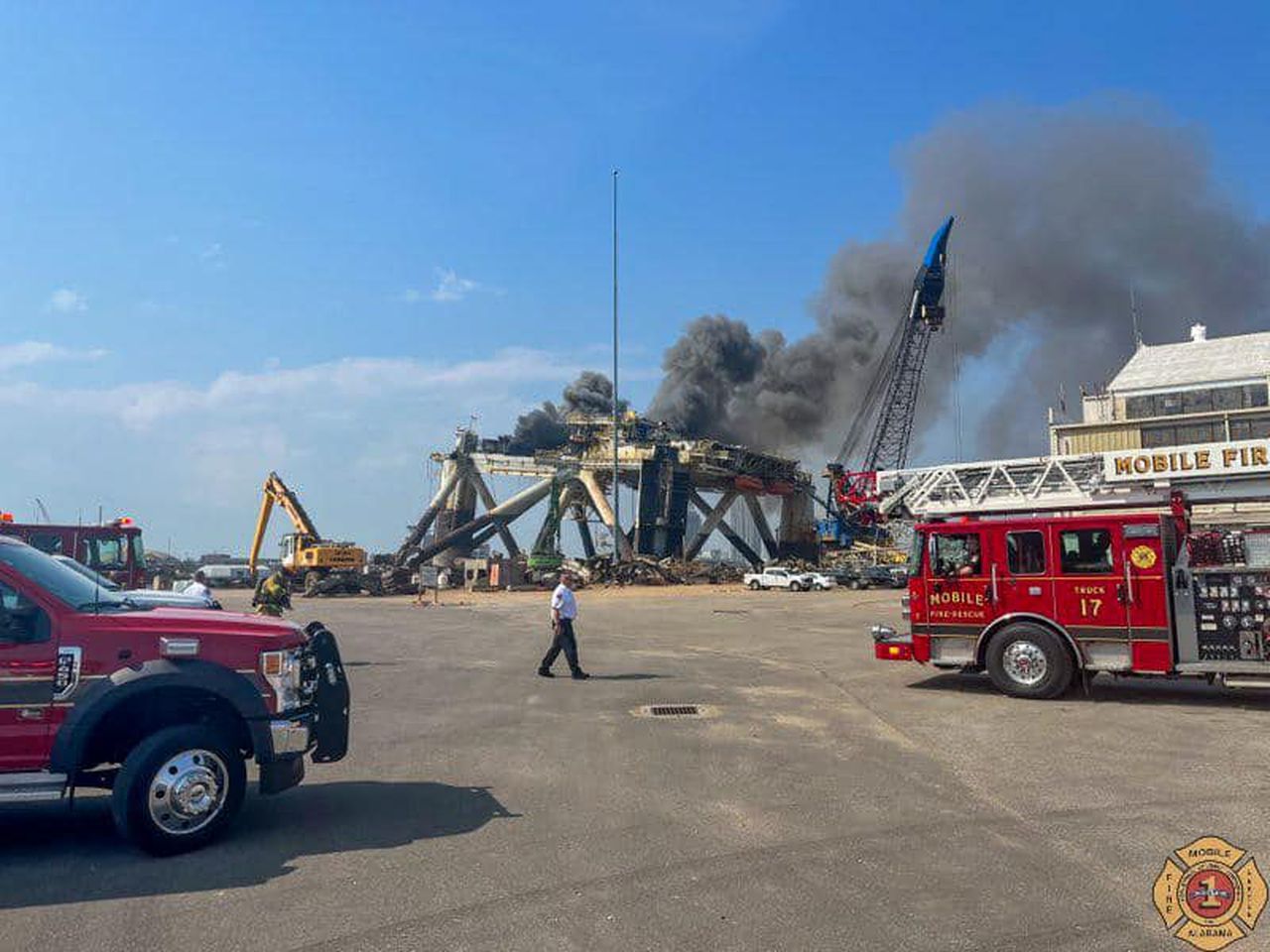‘Potential hazards minimal’ from Mobile River platform fire
The risks of remaining oil or fluid hazards in the wake of the fire aboard a 10 to 12-story decommissioned oil platform in drydock along the Mobile River are “minimal,” according to a report from Mobile Fire-Rescue.
Firefighters were dispatched to 400 Dunlap Drive at 1:48 p.m. on a report of a drydocked vessel on fire. Already, “thick, black smoke” was visible along the skyline, the report notes.
Five minutes later, the first units arrived at the scene and found a multi-story, decomissioned oil rig which was being cut up for scrap, not far from the Mobile Cruise Terminal.
Shipyard workers notified firefighters of oil, diesel fuel, hydraulic flued, cardboard, insulation and other flammable materials on board the platform, prompting a second alarm call to bring additional units to the scene.
Also notified were the U.S. Coast Guard, Mobile County Emergency Mangement and the Alabama Department of Environmental Quality.
In all, more than 55 emergency personnel, including firefighters, paramedics, command staff and support staff assisted in the effort to bring the fire under control, according to the report.
After battling the fire for about 90 minutes, concerns for the stability of the platform floor and crew safety made extinguishing the remaining fire “paramount.”
Infrared cameras mounted on drones allowed firefighters to identify remaining pockets of fire and focus firefighting efforts.
By 4:28 p.m., the fire was deemed under control. By 6:18 p.m., firefighting personnel were leaving the scene and turning over fire watch duties to shipyard personnel.
“This was a tremendous effort by all the crews and command and support staff involved,” read a post to the MFD Facebook page. “Thank you to U.S. Coast Guard Sector Mobile, Mobile County EMA, and shipyard personnel for your assistance in a successful operation.”
Shipyard management and Coast Guard officials gave Mobile Fire-Rescue assurances remaining risks of oil or fluid hazards were minimal.
